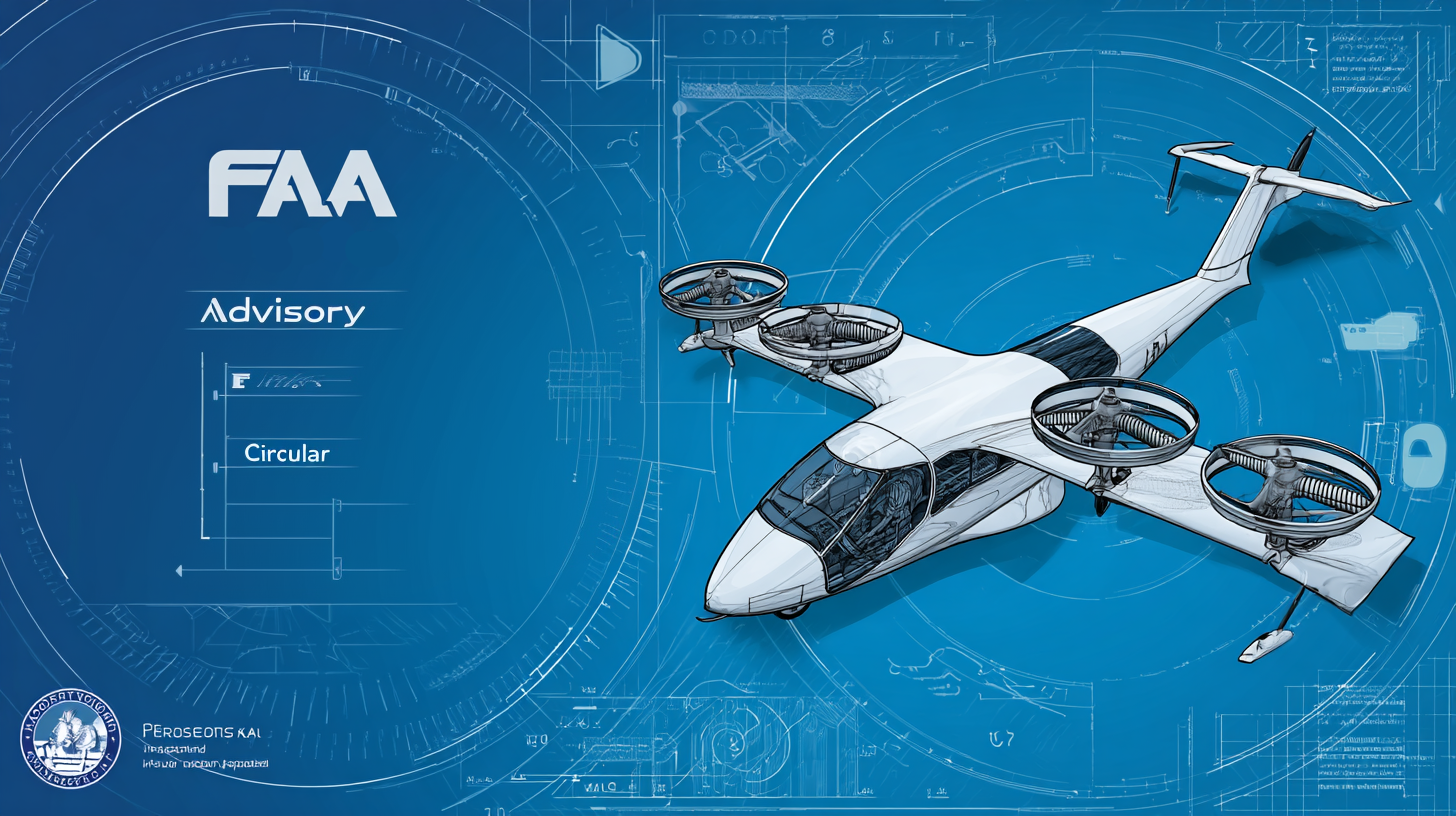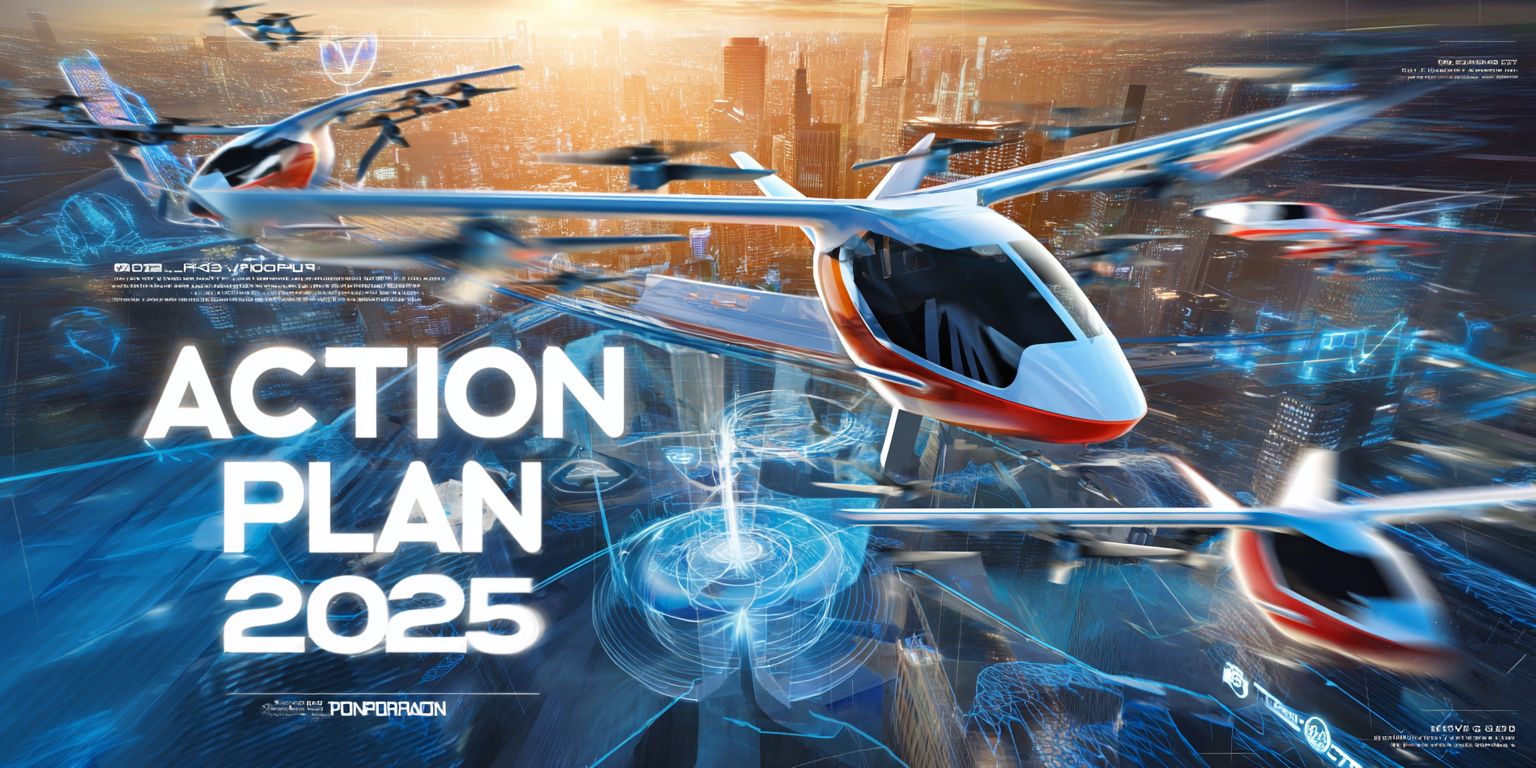On July 18, 2025, the Federal Aviation Administration (FAA) quietly released its long-anticipated Advisory Circular (AC) detailing certification guidance for powered-lift aircraft. This marks the first comprehensive certification framework for a new civil aircraft category since helicopters were introduced nearly 80 years ago. The new AC advisory circular provides a baseline for manufacturers pursuing type, production, and airworthiness certification of powered-lift vehicles, such as electric vertical takeoff and landing (eVTOL) aircraft.
This regulatory step is a turning point for the emerging U.S. low-altitude economy, an airspace layer supporting activities below approximately 1,000 meters (and, in some operational cases, up to 3,000–4,000 meters). This industry includes urban air mobility, unmanned logistics, remote monitoring, precision agriculture, medical airlift, emergency response, aerial tourism, and short-range cargo operations.
What This Means for Powered-Lift Aircraft
Powered-lift aircraft use engine-driven devices or thrust systems for vertical takeoff and landing operations, as well as low-speed horizontal flight. During cruise flight, these aircraft transition to generate lift through rigid wings, similar to conventional airplanes. This hybrid design approach creates aircraft that don't fit cleanly into traditional fixed-wing or helicopter categories, which has historically complicated regulatory development.
The FAA's July 2025 Advisory Circular establishes the certification pathway under Federal Aviation Regulation 21.17(b), which treats powered-lift as "special class" aircraft. This guidance incorporates performance and safety expectations informed by the agency's work with manufacturers including Joby Aviation, Archer Aviation, and Beta Technologies. The special class designation allows the FAA to apply customized airworthiness requirements rather than forcing these unique aircraft into existing categories.
The Advisory Circular addresses specific design parameters for powered-lift aircraft. The framework establishes a maximum certified takeoff weight limit of 12,500 pounds, restricts passenger capacity to six or fewer occupants, and requires the use of battery-electric engine systems. While these criteria provide baseline requirements, the FAA maintains discretion to implement more stringent standards for designs incorporating unique or higher-risk elements[31 Updates in the 2025 Advisory Circular
The finalized Advisory Circular includes several significant modifications compared to the draft version released in June 2024. These changes focus on improving design feasibility while providing greater mission flexibility for manufacturers.
The most significant change involves replacing strict minimum speed requirements with comprehensive "flight profiles." Rather than mandating specific minimum safe speeds, the new approach evaluates performance and safety under particular operational conditions. This modification allows for more diverse aircraft designs suited to different applications within the low-altitude economy, accommodating varying mission requirements from urban air taxi services to cargo delivery operations.
Propeller requirements received substantial revision in the final guidance. Vertical lift and tilt propellers now operate under dedicated fatigue, damage tolerance, and performance test criteria. These enhanced requirements provide additional safeguards for aircraft operating in mixed-speed, high-cycle environments typical of urban shuttle operations where frequent takeoffs and landings place significant stress on propulsion systems.
Another major modification involves decoupling performance requirements from passenger operations. The final guidance removes a draft requirement mandating all passenger-carrying aircraft comply with elevated "increased performance" standards. Under the new framework, manufacturers can select appropriate performance levels based on aircraft design characteristics and intended use cases, rather than simply whether the aircraft transports people. This change provides greater flexibility for specialized applications such as cargo delivery or emergency services.
The final Advisory Circular implements stricter aero mechanical stability requirements to address rotary-wing-type hazards. New provisions specifically target resonance phenomena that could cause loss of control during ground taxi operations or flight. These enhanced stability standards help ensure safe operation across the full range of powered-lift flight modes.
The compliance framework draws from multiple existing Federal Aviation Regulation parts, specifically Parts 23, 25, 27, and 29 for aircraft design requirements, plus Parts 31, 33, and 35 for systems and powerplant standards. This comprehensive approach ensures powered-lift aircraft meet established safety levels while accommodating their unique operational characteristics within the low-altitude economy.
Integration into the U.S. Low-Altitude Economy
The finalized AC clears a major obstacle for near-term deployment of powered-lift aircraft in urban and regional transport, cargo logistics, disaster response, and other low-altitude operations. Until now, regulatory uncertainty has been one of the largest barriers to U.S. commercial activity.
With clear certification pathways established, those involved in the low-altitude economy—manufacturers, operators, and infrastructure developers—can make more focused investment decisions. The availability of certified aircraft is essential for the viability of planned vertiport networks, pilot training programs, and local flight services.
This is especially relevant as the FAA's October 2024 Special Federal Aviation Regulation (SFAR) already defined operational rules for powered-lift aircraft and pilots. Together, the AC and SFAR create the first full regulatory stack for commercial powered-lift operation in the U.S. This unlocks implementation of flight services previously limited to research or demonstration activities.
FAA Alignment with Global Standards
Alongside the July AC, the FAA has signed a five-nation cooperation agreement with regulators in Canada, the UK, Australia, and New Zealand. This deal allows shared review of powered-lift aircraft certified by any participating authority, with the goal of speeding up global certification alignment.
For U.S.-based manufacturers like Joby and Archer, this collaboration helps reduce duplicative certification costs and offers access to more international markets. For the broader U.S. low-altitude economy, it means faster scaling of cross-border services and export opportunities.
Program Status and Industry Effect
Joby and Archer remain farthest along in the FAA’s five-stage type certification process. Beta Technologies has also confirmed that the final AC removes a major procedural hurdle by eliminating the need for additional special rulemaking. This enables more direct compliance efforts and makes it simpler for powered-lift designs to advance toward commercial use.
Vertiport development, a crucial part of the low-altitude economy, also hinges on aircraft certification progress. According to market data from June 2025, over 1,500 vertiports are in various planning stages globally. Yet, delays in aircraft readiness have forced scaling back of near-term expectations—experts now anticipate about 980 facilities by 2029. In the U.S., deployment may remain closely tied to the success of initial FAA-certified operations in cities like Los Angeles, Dallas, Miami, and Orlando.
Federal Policy and Near-Term Momentum
In June 2025, the White House launched the eVTOL Integration Pilot Program (eIPP), an expanded version of the FAA’s past drone integration pilots. The eIPP emphasizes data collection on beyond-visual-line-of-sight (BVLOS) flight, infrastructure use, airspace cooperation, and state-local coordination.
Alongside this, the FAA finalized its Modernization of Special Airworthiness Certification (MOSAIC) rule in July 2025. While MOSAIC does not yet grant powered-lift privileges to sport pilots, it formally brings electric and powered-lift configurations under airworthiness evaluation for eventual broader flight categories.
With the release of the final Advisory Circular for powered-lift type certification, the United States has taken a concrete step toward putting the low altitude economy in operation. The rule adds clarity for investors, business planners, city transit authorities, and tech builders aiming to establish real-world services using advanced aircraft.
However, certification is only one piece. Operational reliability, public confidence, and infrastructure deployment will also shape adoption. Manufacturers still face test flying, conformity reviews, and system validation before entering service. No U.S. powered-lift design has yet completed commercial type certification. With regulatory uncertainty now reduced, the low-altitude economy in the U.S. is better positioned to move from concept to reality.




